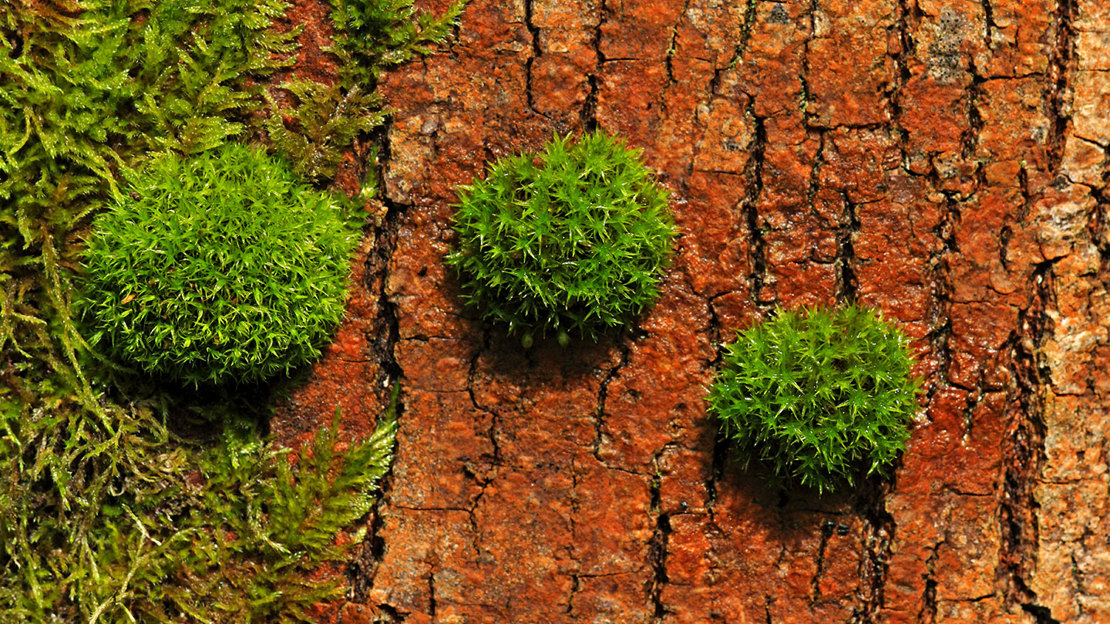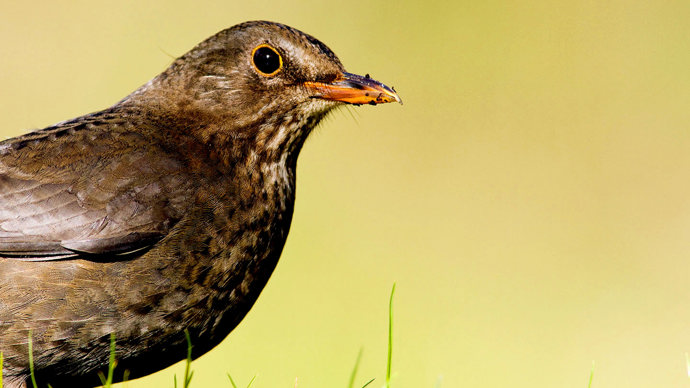Common name(s): bristle mosses, wood bristle mosses, tree cushion mosses
Scientific name: Orthotrichum spp.
Family: Orthotrichaceae
Origin: native
Fruiting season: late spring to summer.
Habitat: woodland and wayside trees
Bristly, spongy, and very sensitive to pollution, the bristle mosses are true tree lovers. Whereas most woodland mosses grow on the ground, look for these on tree trunks, branches and twigs.

Common name(s): bristle mosses, wood bristle mosses, tree cushion mosses
Scientific name: Orthotrichum spp.
Family: Orthotrichaceae
Origin: native
Fruiting season: late spring to summer.
Habitat: woodland and wayside trees
Mosses are simple, rootless evergreen plants that don’t have flowers or seeds but reproduce by spores. There are 19 species of bristle moss in the UK and 16 grow exclusively on trees and other woody plants. The mosses form small to medium-sized tufts ranging from 0.5cm–4cm tall.
Leaves: almost parallel-sided, tapering very gradually from the base, with tips that are anything from rounded to sharply pointed. They range in colour from mid-green to dark green.
Sporophytes /spores: sporophytes (spore capsules) are light brown and roughly egg-shaped and supported by a stalk. The beak-like opening (peristome) at the top of the sporophyte is surrounded by a double row of tiny teeth that help with spore release.
Not to be confused with: the pincushion mosses (the Ulota genus). These are similar in size and general appearance to bristle mosses and also occur on trees trunks and branches.
Bristle mosses favour damp conditions, but grow across the UK. Trees on woodland edges in parts of Wales, western England or southern Scotland, may host seven or eight species.
Most brittle mosses grow on a wide range of host trees, particularly trees with base-rich bark, such as willow, poplar, sycamore and ash. Black elder is favoured by bristle mosses in eastern England because of its moisture-retentive bark, while aspen is favoured by bristle mosses in eastern Scotland.
The unripe spore capsules of many bristle moss species are covered by a thin, membranous hood with upright hairs – giving the genus its English name of bristle mosses.

Credit: Enda Flynn / Alamy Stock Photo
Moss offers habitats for other plants, insects and fungi. Some larvae of micro-moths and lace bugs feed only on moss. Other insects hunt among moss for prey. The insects from moss also feed bats and birds. Squirrels use moss to line their dreys, while dormice hibernate in nests made beneath moss.
Moss has been used over centuries to provide moisture for thirsty travellers as well as wound dressings – particularly during the First World War. It has been used in floristry, medicine and increasingly in biotechnology. In rural UK it was traditionally used to extinguish fires.
Bristle mosses are very susceptible to atmospheric pollution. During the 20th century, sulphur dioxide pollution resulted in the loss of many bristle mosses in England, which became severely limited in their distribution.
Cleaner air in the last few decades has reversed some of this loss, and at the same time a few continental European bristle mosses have started spreading into Britain.